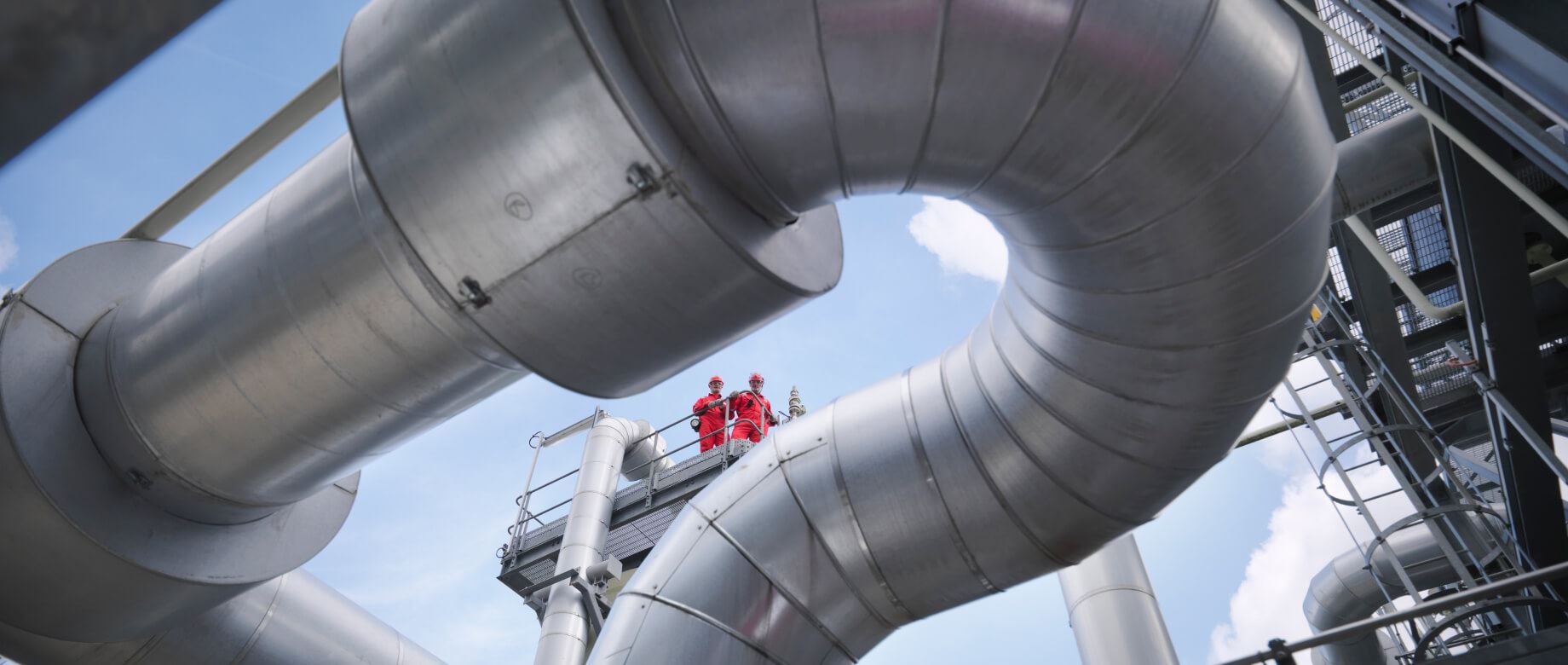Why are LETs so important?
Low emission technologies have been championed by experts across the globe as a key factor in making both a transition to renewable sources and a net-zero emissions future possible.
What’s the challenge?
The world needs to rapidly cut carbon emissions.
For Australia, if we’re to meet our international climate commitments on the timeline set by scientists and the Paris Agreement, we must reduce emissions by 26-28% below 2005 levels by 2030.
Globally, we’ll then need to reach net-zero emissions by the second half of the century.
Achieving those commitments – and putting us on the path to a net-zero emissions future – means overcoming the challenge of having clean, reliable, affordable and flexible energy that is there when and where we need it.
To reduce emissions in a way that maintains Australia’s growth is an economy-wide challenge, and that means helping emissions intensive industries, including manufacturing, transport and agriculture, reduce their carbon footprint.
Closing the gap between emissions and economic growth is “the biggest global challenge of our era” according to Australia’s former Chief Scientist Dr Alan Finkel AO.
Just as it has throughout modern history, technology has a critical role in the solution. Low emission technology, working alongside renewable technology, can keep Australia powering forward to a clean energy future by reducing and removing emissions.
Demands for energy 1
It’s energy that drives our daily lives, whether that’s how we live, or through the industries making the products, infrastructure and services we use and rely on.
Global demand for energy is shown in three key statistics:
| 9.74 billion | 10.9 billion | 50% |
| By 2050 the increase in global population from 7.8 billion | Increase in global population by 2100 | Increase in global energy demand by 2050 |
Global energy demand isn’t an abstract idea. Australians expect our lights to turn on when we hit the switch and the aircon to work when it’s needed most. Plus, we want the things we buy – from groceries and products for our home – to be as affordable as possible.
These expectations put pressure on the power grid and industry and the carbon emissions that come with them. And so the challenge becomes dialling down these emissions quickly, but in a way that doesn’t impact our daily lives or cost of living.
There is no single solution to our clean energy needs. The challenge is complex and we need a mix of complementary, technology-driven approaches. Renewable energy has an important and increasing role to play, supplying about 20% of the country’s energy needs in 20193. Almost 80% of electricity generation came from fossil fuels. While Australia is on a journey to implementing renewables at scale, complementary low emission technology such as carbon capture utilisation and storage (CCUS) will be a crucial part of the country’s energy mix. They’ll contribute clean ways to power the industries – often with hard-to-abate emissions – that drive our lives now and into the future.
Meeting industry needs 4
The industrial sector is responsible for nearly one quarter of the world’s annual greenhouse gas emissions. Products such as cement, chemicals, steel and aluminium take significant energy to produce, creating hard-to-abate emissions, but are literally the building blocks of our economy.
The International Energy Association estimates 40% of global energy is used by emissions-intensive industry. While considerable progress has been made to improve efficiency (it takes 60% less energy to produce a tonne of steel today than it did in 1960), vast amounts of power are still required.
Decarbonising hard-to-abate sectors such as chemicals, steel and cement manufacturing remains a challenge. But a range of low-emission technologies could put these industries on the road to net zero, bridging the gap between the energy demands of industry and reducing carbon emissions.
These technologies can retrofit existing infrastructure – used in both industry and energy production – to capture and then reuse carbon emissions. The same and other revolutionary technologies will enable future, net-zero emission industries – such as clean hydrogen.
Clean hydrogen could be used to produce electricity for many types of industries, such as steel manufacturing, with zero carbon emissions when combined with CCUS. And it can be used in transport, also reducing emissions.
That’s why the Federal Government’s 2020 Technology Investment Roadmap names hydrogen, carbon capture and storage and low carbon materials – specifically low emissions steel and aluminium production – as three of five key areas for investment, noting their potential to significantly reduce global emissions.
The roadmap is a sign of the clear momentum for industries to explore CCUS to remove emissions from existing production and unlock the potential for the clean industries of the future.

Managing fugitive emissions
Fugitive emissions are unintentional emissions from mining processes. They are primarily composed of methane caused by the extraction, processing and supply of fossil fuels, such as coal and natural gas.
They make up a significant amount of greenhouse gas emissions – around 7% according to the Australian government. It’s especially significant because, according to the CSIRO, the global warming potential of methane is around 25 times greater than that of CO₂ over a 100-year period.
Methane drained prior to underground coal mining is safely confined within the drainage system, in the same way that natural gas delivered to households is safely confined within the pipework. Methane abated in this way can be used by industry.
Residual gas will remain in the ventilated air flow leaving the mine. Low emission technologies, systems and processes can help abate these emissions. LETA is working with the coal mining industry to demonstrate the safe reduction of ventilation air methane – a type of fugitive emission – in Australia
What are we aiming for?
In short, a net-zero emissions future driven by affordable, reliable and flexible energy sources.
To meet or beat international climate commitments – starting with the Paris Agreement of limiting global warming to well below 2 degrees Celsius – low emission technology must be part of the solution.
That’s not just the view of LETA. It’s the view of the Intergovernmental Panel on Climate Change (IPCC) and the International Energy Agency (IEA).
“The net-zero challenge calls for a step change in technology innovation in critical areas such as enhancing energy efficiency,” the IPCC’s Dr Hoesung Lee and the IEA’s Dr Faith Birol have stated.
Making low-carbon electricity the main source of energy for heating buildings, powering vehicles, capturing, storing and using carbon as well as developing the potential of clean hydrogen and bioenergy – is a key solution to the net-zero challenge.
Energy transition
Australia and the world are in the middle of a rapid phase of transition in energy production. It’s a move to finding new, cleaner ways to produce energy and run the industries we rely on.
A net-zero emission future requires a transition in our energy system – not a hard switch. Energy transition is not about one sector, one fuel, one process or type of technology. Low emission technologies are a crucial part of the energy mix – working alongside renewables – as a complementary source of future clean energy using proven technology.
The transition to cleaner energy production is already in progress. There are currently 28 commercial CCUS facilities across the world. Twenty-six are operational with three more under construction, and another 34 in various stages of development. That’s a total of 65 with a capture capacity of 127 million tonnes a year. Sites in operation are capturing 40 million tonnes per year. That’s the equivalent of removing about half of Australia’s cars off our roads.

Our need to meet international climate commitments is critical. And investing in energy transformation can also have economic benefits, particularly job creation.
According to the Global Commission on the Economy and Climate – energy transition could boost economic growth by $26 trillion globally and create more than 65 million jobs.
What does science say?
Low emission technologies, and in particular CCUS, have been championed by experts across the globe as a key factor in making both a transition to renewable sources and a net-zero emissions future possible.
The UK Committee on Climate Change, the agency that advises the British government on its five-yearly carbon budgets, released a report calling CCUS “a necessity, not an option”.
Their vice-chair, Professor Julia King – who has visited Australia to speak about the benefits of LETs – has said that the use of CCUS is “absolutely essential” in order to achieve a net-zero emissions future.
Meanwhile, a 2018 report by the UK’s Royal Society of Chemistry called CCUS “the way forward” when it comes to bridging the gap between current systems and those we want to see implemented.
The report highlighted the fact that CCUS can be integrated into existing energy systems without requiring large systemic changes, and can in fact be combined with low-carbon or carbon-neutral bioenergy to generate negative emissions.
Low emission technology and renewables can work side by side towards their shared objective – a net-zero emissions future.
What could the difference be?
In the transition to a low emission global economy we need to be open to new ways of reaching our goals. From capturing emissions from power production and industry, reusing it or storing it safely to helping the development of clean alternative fuel sources, there are many solutions to a shared challenge of creating a net-zero emission future.
References
[1] https://www.energy.gov.au/data/energy-consumption – https://aemo.com.au/en/newsroom/media-release/qed-q2
[2] Source: U.S. Energy Information Administration (EIA) International Energy Outlook 2019 (IEO2019) Reference case
https://www.eia.gov/todayinenergy/detail.php?id=41433
Related content